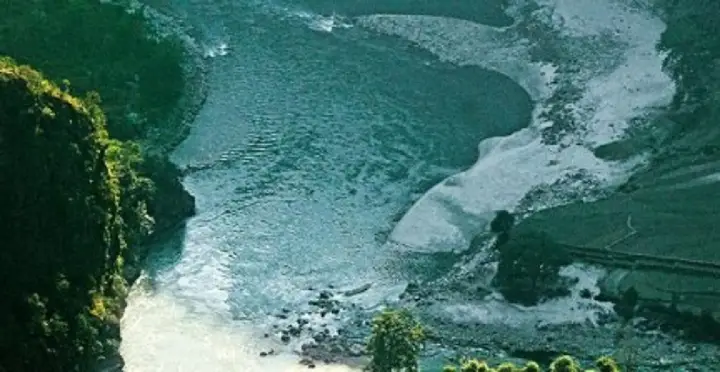

The Pancheshwar project will be key to harness India-Nepal energy partnership
Kathmandu: A meeting of the team of experts between Nepal and India to finalise the Detailed Project Report (DPR) of the Pancheshwar Multipurpose Project kicked off in Kathmandu on Friday.
Bilateral negotiations have accelerated at different levels since two sides agreed to finalise the DPR within three months when Nepali Prime Minister Pushpa Kamal Dahal visited India from late May to early June.
Differences over the existing draft of the DPR has been one of the reasons why 6,480MW project which is also supposed to irrigate vast swath of lands in two countries, has remained limbo for nearly three decades since two countries signed the Mahakali treaty in 1996.
The project is an integral part of the treaty whose delayed implementation has invited criticism in Nepal as proponents of the treaty have nothing to show about its benefit.
“If two sides are able to finalise the DPR from the meeting that kicked off on Friday, it will open the new course in implementation of the much-delayed project,” Madhu Bhetuwal, chief executive officer of the Pancheshwar Development Authority told India Narrative. “Both sides have realised that they are failing to get the benefits that they are supposed to get from the project. That is why there is greater convergence in their stance lately.”
In order to take part in the two-day meeting, the India government has sent a delegation led by Kushvinder Vohra, chairperson of Central Water Commission, according to Nepal’s Ministry of Energy, Water Resources, and Irrigation.
After the signing of the Mahakali Treaty, the two countries had prepared separate DPR of the project. Later, the WAPCOS had prepared and submitted the DPR of the project in 2016 by merging the two separate DPR. Still, two sides were not on the same page on several issues of the merged DPR, consequently delaying the finalisation of the DPR.
The key difference between the two sides has been on who enjoys how much benefit from the project. As per the existing DPR prepared by the WAPCOS, two sides will enjoy equal benefit in power but India enjoys 65 percent benefit in irrigation and 82 percent benefit in flood control.
But, Nepal, particularly, has not agreed to these recommendations. In Kathmandu’s understanding, irrigation and flood control benefits are close to non-existent for Nepal.
Bhetuwal said that Nepal could irrigate a maximum of 100,000 hectares of land following the completion of this project while India could irrigate as much as 3.5 million hectares of land.
India has a larger land mass to irrigate its land from the water of Mahakali, which is also known as Kali and Sharada River in India. The dam to be erected to develop the hydroelectric project will help to regulate the flow of water minimising the flood risks for India as a downstream country.
Quantifying the benefit for each side is important to determine the cost to be borne by each side because two sides agreed to the principle that cost would be borne by either side based on benefits for either side.
According to the Mahakali Treaty, the project will be designed to produce the maximum total net benefit. All benefits accruing to both the Parties with the development of the Project in the forms of power, irrigation, flood, control etc., shall be assessed, article 3 of the Mahakali Treaty says. “The cost of the project shall be borne by the parties in proportion to the benefits accruing to them. Both the Parties shall jointly endeavour to mobilise the finance required for the implementation of the project.”
Nepali officials said that the benefits to be calculated will be outside the existing water use by both sides. As per the treaty, both sides agreed that there would be no sharing of existing consumptive users of water of the river which has ensured more benefit to India which has already been using vast amounts of water from the river.
After the DPR is finalised, the next step will be to generate necessary resources to implement the project and acquire the land to develop the project.
“Acquiring land will also be complicated as the cost of land acquisition has been growing rapidly in recent years,” said Bhetuwal. “About 20-25 percent of the total cost is expected to be covered by land acquisition.”
Also Read: After three decades in limbo, India and Nepal rekindle Pancheshwar hydro-project
Israel Defence Forces Spokesperson Brigadier General Effie Defrin on Thursday said that Iran has expressed…
India's Hindustan Aeronautics Limited (HAL) and French engine manufacturer, Safran Aircraft Engines, signed an agreement…
India has emerged as a country with the third-largest growth in power generation capacity globally…
Prime Minister Narendra Modi hailed Indian chess grandmaster Divya Deshmukh for defeating world number one…
The family of detained Baloch leader Mahrang Baloch has accused prison authorities at Quetta's Hudda…
The QS World University 2026 Rankings bring great news for our education sector, as the…